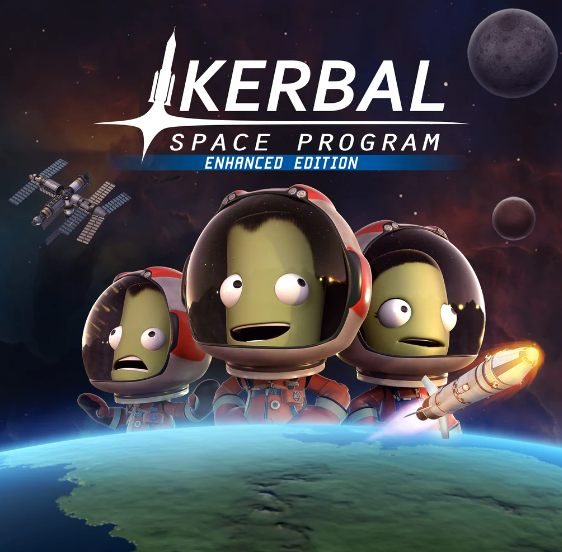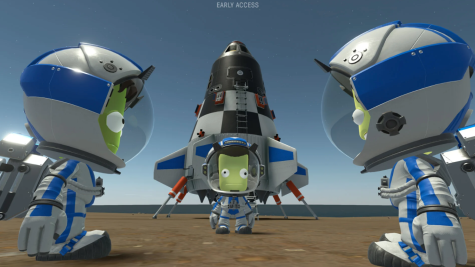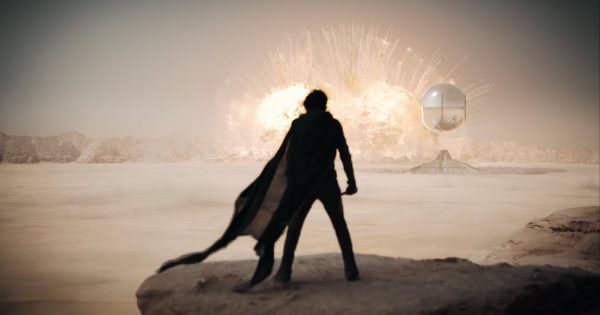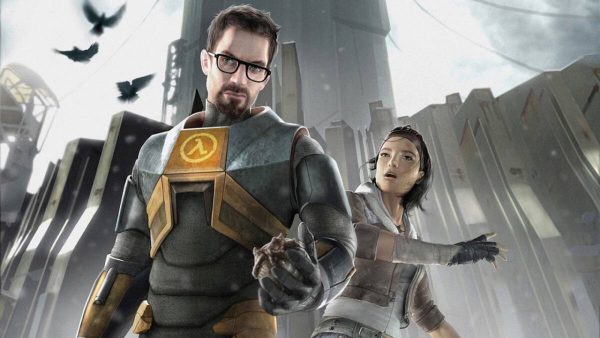Exploding Rocket Noodles in the Newest Kerbal Space Program
Suyog Vibhuti ’25 breaks down the buggy and oddly carb-loaded mess that is KSP 2.

Kerbal Space Program was one of the first PC games I ever played, a game of developing rockets, manning them with little green aliens, and watching them explode. Any rockets built followed mostly realistic physics and design principles, requiring lots of trial and error to iterate upon, but to balance the struggle of simplified rocket science was the complete slapstick energy of watching things go horribly wrong. Its breakout popularity was only a matter of time.
The announcement of Kerbal Space Program 2 coming in 2019, then, was like a dream come true. However, due to internal corporate controversy, overconfidence, and pandemic setbacks, it was only released in an early access stage in 2023. Now that it’s in the hands of consumers, however, a varied degree of bugs has made its launch extremely rocky. Luckily, though, recent fixes have ironed most of them out, but these short-lived launch day bugs were marvels in their own right, from teleportation to swivel rockets being taken a bit too far. Let’s check them out.
As such, the moment any sort of force gets applied to them, all sense of physics goes flying out the window, rockets start wobbling and tipping over uncontrollably, and the player is left to lament the loss of a rocket as stable as overcooked spaghetti.
First on the list, we’ve got noodle rockets. Ever wanted to watch rockets turn into carbonara? Now you can. In the original game, joints between rocket parts were reinforced automatically, and yet in launch day KSP2, joints stay flimsily held together at their centers with the strength of duct tape. As such, the moment any sort of force gets applied to them, all sense of physics goes flying out the window, rockets start wobbling and tipping over uncontrollably, and the player is left to lament the loss of a rocket as stable as overcooked spaghetti.
Perhaps the player does, by chance and fortune, succeed in reaching any sort of surface destination in the KSP version of the solar system, aptly called the Kerbol System. Then, their little kerbal astronauts will have to run for their lives on any extravehicular operation. The spacecraft has a vengeance, and will randomly teleport towards any kerbonaut who rejects the safety of its crew module. If they do not run like their life depends on it, the spacecraft will teleport directly into their location, vaporizing and practically “eating” the poor kerbal alive.
 But maybe the player is a hardened Kerbal veteran. Perhaps they’ve braved the plethora of bugs in the original builds of the original game. Perhaps, they’ve decided to take on the monumental challenge of reaching the north pole of the Kerbal analogue for Mercury, known as Moho.
But maybe the player is a hardened Kerbal veteran. Perhaps they’ve braved the plethora of bugs in the original builds of the original game. Perhaps, they’ve decided to take on the monumental challenge of reaching the north pole of the Kerbal analogue for Mercury, known as Moho.
Well, they may be capable of tearing open the fabric of reality as we know it. In the original game, a glitch caused a massive gaping hole in the north pole of the planet Moho to form, and community support led to it becoming a mainstay of the Kerbol system. However, in KSP2, a new bug involving the famous “mohole” emerged: it can transcend time and space itself.
Simply send a Kerbonaut in, and once they reach its base, a strange glitch in the terrain causes them to clip through, directly into the core of the planet. Due to time and velocity being recorded in discrete intervals, and due to peculiar gravitational mathematics, the Kerbonaut will be spat directly out into space at a nigh-infinite velocity, directly on an escape trajectory out of the Kerbol system, never to return again.
Miraculously, the developer team has managed to iron out several of these bugs in post-launch fixes. However, we must never forget the lives it took. Kerbals spaghettified into nonexistence, chewed up by their own spacecraft, or swallowed up and spat out by celestial bodies for this game to finally be playable.











